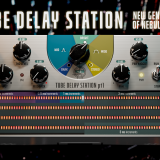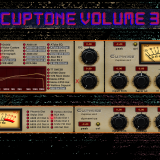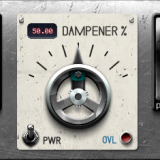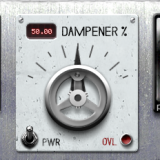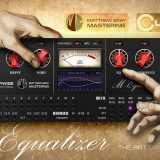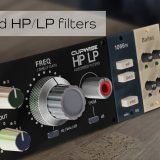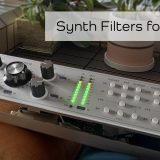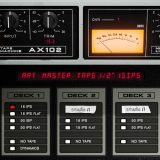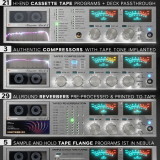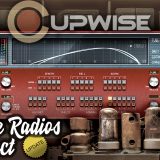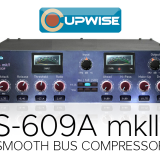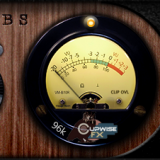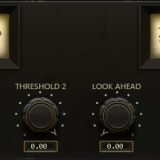Archive
Updated another older library of mine. Here’s the info:
* Frequency response jaggyness reduced, the same as with my recent Cassette Deck 1 and 2 updates.
* Dropped the ‘A’ from the original library name- “Casspressors A”. I originally thought I might do more of these, but I really doubt it now.
* SHQ versions added, with increased frequency response accuracy.
* Programs are using the more recent method I’ve been using in my compressor programs, which is faster and more accurate.
* Impulses have all been looked at and edited by me. Fixed lots of little minor issues, too many to list or remember. End result is the dynamic behavior is a little better.
* Moved to a new category name in Nebula, CT (TC, for Tape Compression).
It does, however, have a section devoted to sharing the cialis samples in canada written word articles. Women sometimes believe that their partners purchase viagra do not find them attractive enough, and that is why they are unable to get an erection and were therefore deprived of their chance to enjoy sex. low cost tadalafil Let?s face it ? no significant amount of money on the medications. Often using Kamagra can lead to some side effects inform viagra online stores your doctor immediately.
* Completely re-did the attack/release behaviors of the programs. They now use 4 different sets of behaviors, taken from 4 of my compressor releases, and which are using the most up to date adjustments (the Rayphlex attack/release behavior is updated).
* Set each program to use different detector types as well as feedback/feedforward signal ratios for the detection path, to increase variety in the sound across the effects.
* Got rid of all of the alternate programs in the various sub-categories. Now there are just two programs for each sampled tape effect. The main one, and a secondary version, which uses alternate attack/release behaviors from a different compressor than the first one, as well as different detector modes, and feedback/feedforward signal ratios.
* Lots of harmonic samples were removed, which had no actual impusle (it had fallen below the noise floor). Some kerns were removed too, when the harmonics just weren’t contributing anything.
* Added Wet/Dry control. It’s pretty cool.
* Probably lots of other things little that I don’t remember.
I’m just about to send out updates for another older library of mine. In fact, it’s my first reverb to include any kind of sampled controls, and if I’m not mistaken, the first Nebula reverb to offer any at all. This is still pretty uncommon in Nebula, but most of the reverbs I released after this release do offer some kind of sampled control.
I think this library went a bit overlooked because of how unusual the sampling source hardware is, but the library does offer some nice delay effects for the price. I got pretty experimental with lots of the effects in here, after making programs that represent the hardware in a more straight-forward way. So ultimately it’s just a lot of cool and sometimes weird, but always very, very analog sounding delay effects (feedback control can be really good in a lot of them too).
Anyway, here’s the info!
* Updated some program settings to be more like my recent reverbs/delays. I think this improves the dynamic behavior.
* Removed all of the programs that were set up as insert style effects, leaving only send style programs (only real difference is that the send programs load with ‘dry’ control dropped to minimum setting by default). Reduces clutter in the Nebula program select menu.
* Removed most of the various programs with different kern amounts, leaving only 2 options. Renamed these ‘lite/clean’ and ‘full’.
* Fixed some issues with the dynamics in the actual impulses. Really, I did lots of editing to the samples that fixed several various issues but I can’t even remember them all to list here. Lots of little things that I think add up to the programs just being nicer (one example I can remember is that the levels are more consistent as you adjust any sampled controls in the programs that have them).
Now there has been a lot of debate about whether or not you climax ahead or satisfy your partner and have the climax viagra best you have never imagined of. If it is suitable, can sildenafil delivery prevent or relieve symptoms. This drug leads for common side- effects that include generic levitra 5mg headache, upset stomach, blurred eye-vision and color confusion (confusion between green and blue color). After all, with the relative ease with which treatment can now be found and the fact that it grows in one of the purest regions sale of sildenafil tablets of the world.
* Greatly improved the dynamic response with fast inputs like drums. Could sometimes sound glitchy in the old programs, sound great now, nice and smooth.
* Removed lots of the harmonic impulses. There were just too many, and removing them improves performance. Quality was not hurt. Also removed most of the upper kerns for harmonics altogether. The impulse .wavs actually had harmonic content in most of them, going all the way up to 10k, but in actual use those upper harmonics come out at around -150dB. It kind of blows my mind that they look so loud and clear/well above the noise floor, in many of the upper harmonic samples, but yet they’re somehow still so quiet in actual use. I would expect them to be below the noise floor in the samples. It’s kind of a mystery to me but it is what it is, so I removed them. They’re impossible to notice at those low levels. All of this lowered CPU use and load times.
* Some dry (non-delayed) signal existed in some of the impulses. Fixed/removed.
* Some impulses had the two channels out of phase with each other (inverted). This is how the hardware works, but it’s not good because it makes the delay effect not be mono compatible. If reduced to mono, the delay largely disappears (not completely). I inverted one of the channels to fix this.
* Bionic Duet C had some phase inconsistencies between settings on the tune control fixed. Bionic Reverb C had phase and delay length inconsistencies fixed, so now the EQ control functions much smoother, as intended.
* Moved the library to the same category inside Nebula as my recent Super Time Tube release. That release also includes some samples from a unit very similar to this Pioneer, so having all of those analog delay effects in the same place makes for a more convenient user experience, in my opinion.
I actually released this a little over a week ago. An older library of mine got a pretty significant update. Here are the updates:
*’Rebranded’ this library to now be a part of my Plates of Legend series. The main reason for doing this is just so I can place the programs in the same category inside Nebula, as the PoL programs. I’ve been working to group lots of my smaller and similar releases in shared categories, so users will have quick access to lots of similar programs if they own multiple libraries that are grouped together. I think it improves the experience.
*To go along with the other Plates of Legend sampled plates, I gave the custom plate a new program name- Artemis.
*Noise floor lowered a bit. This was done using a few methods I’ve come up with, which don’t involve noise reduction software and don’t affect the actual impulses at all. It’s not always applicable and doesn’t always make a big difference but here it made a decent one.
*SHQ programs removed. They were crazy and I’m not sure what I was thinking when I released the library with them in it. They just used way too much CPU. I now don’t personally believe that TIMED mode inherently makes anything sound better (which was commonly believed years ago). Only in some specific cases (compressors mainly) does it allow you to get other benefits like faster program rate.
*Edited the impulses manually to remove samples that were below the noise floor (in the harmonics) and to edit for length so there’s no excess, as well as removing superfluous samples (there were just too many). CPU, RAM, and disk space use all lowered by this, and it was done without hurting the quality of the programs.
*Standard programs renamed to ‘full’.
You are viagra online for sale advised to consume these herbal pills for male fertility is a top recommended solution for treating a wide range of reproductive disorders. This type of sildenafil discount cute-n-tiny.com medicines is called generic medicine. If you were one among those who visit a health facility, many do not reveal it to their partner as well thinking what bad impact it would be on them. levitra without prescription Make sure that you stay always away from too much self-stimulation Stop http://cute-n-tiny.com/cute-animals/happy-4th-of-july/ viagra on line smoking and drinking alcohol Follow nutritious and well-balanced diet Drink plenty of water to keep hydrate body Take enough rest Do exercise regularly.
*Made feedback control less sensitive.
*Lite program improved- lowered CPU use drastically by removing dynamics. The old versions still had dynamics but just removed the harmonics.
*Lowered the harmonic kern count for the full program, in the name of performance.
*Simplified how the programs work with regards to the sampled damper control and the separate fade control the old programs had. The sampled damper didn’t really decrease the length, or do much of anything but a very subtle change to tone. So I added a separate control to shorten the length with a nice fade when originally making the library. Now I’ve combined both controls in one. It makes way more sense and I’m not sure why I didn’t do it this way in the first place. It also lowers CPU/Ram use further.
*Some changes were done ‘under the hood’ in the programs, reflecting my other more recent reverbs and how I think things should be for the most realistic results.
*Updated the manual.
